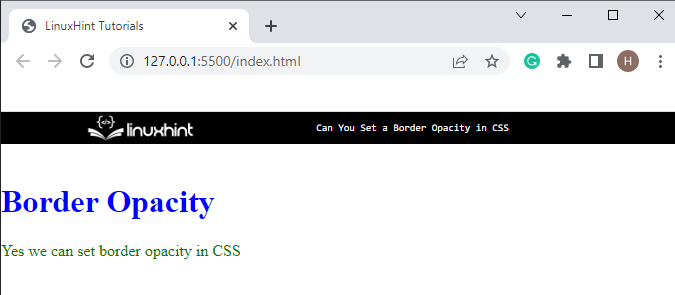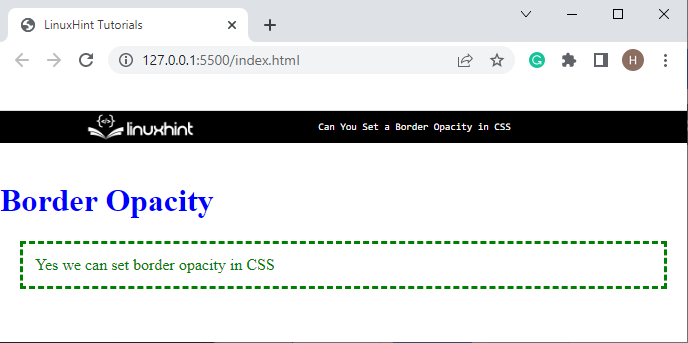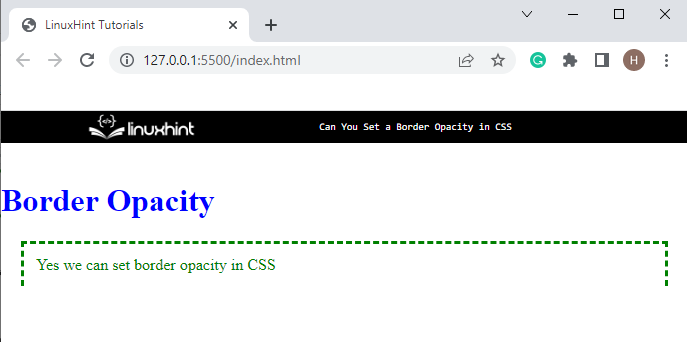This post will explain:
Can You Set Border Opacity in CSS?
Yes, users can set the opacity of any element in CSS. To make the border transparent or completely invisible, set its opacity by specifying the “border” property along with the “rgba” value.
The basic syntax to apply the border opacity is given below:
Here, the first three values represent the red, green, and blue colors. The last value specifies the opacity represented by “a”:
How to Set Border Opacity in CSS?
To set the border opacity, follow the given instructions:
- First, add a heading by utilizing the “<h1>” tag, and insert the “style” property as “color: blue” to set the heading color.
- Then, create a “<div>” container along with the class name “content”.
- After that, insert text between the “div” tags:
The resultant image displays the output of the above code:
Let’s move toward the CSS part for styling the HTML element and set the opacity of the border.
Style “content” Class
First, access the “content” class using the “.” selector and apply the below-mentioned CSS properties:
border-style: dashed;
padding: 2px;
margin: 4px;
background-clip: padding-box;
}
Here:
- The “border-style” property is set as “dashed” for styling the border.
- The “padding” property sets the space around the element content.
- The “margin” property is set as “4px” to adjust the space around the element.
- The “background-clip” property defines how far the background (color or image) should extend within an element:
Next, apply border opacity by utilizing the below property:
The “border-bottom” property makes the bottom side of the border transparent. Here, the value of “a” is set as “0” to hide the border completely:
It can be observed that the border opacity has been set successfully.
Conclusion
To set the border opacity in CSS, first, set the border around the element by utilizing the “border” property. After that, again utilize the border property along with the “rgba” value to set the opacity of the border. Users can also set border opacity on specific sides by using “border-bottom”, “border-top”, “border-left”, and “border-right” properties. This post has demonstrated the method for setting the opacity of the border in CSS.



